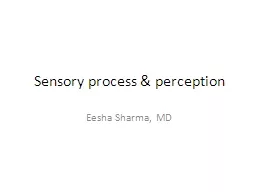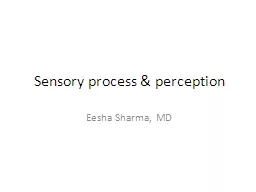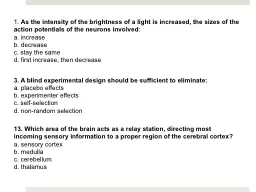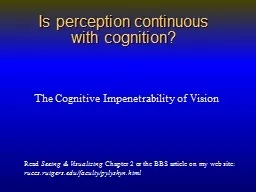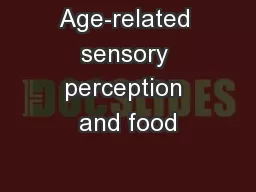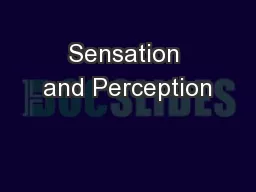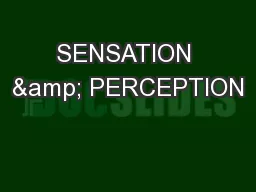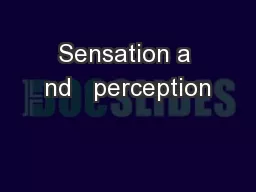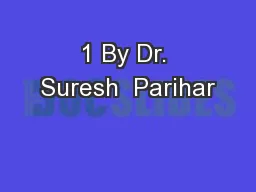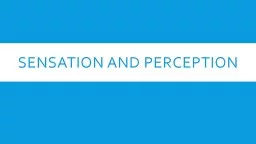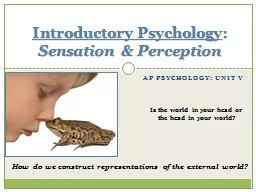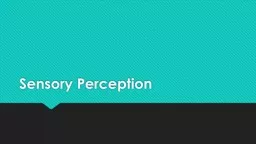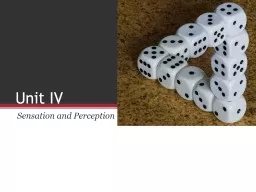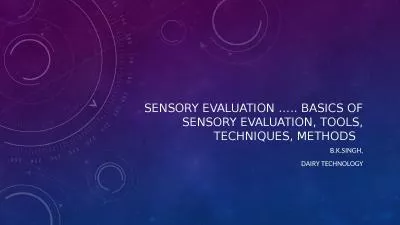PPT-Sensory process & perception
Author : alexa-scheidler | Published Date : 2016-03-08
Eesha Sharma MD Sense organs Receptor potential Generator potential Psychophysics Gustav Theodor Fechner 1860 Quantitative relationship between physical stimuli
Presentation Embed Code
Download Presentation
Download Presentation The PPT/PDF document "Sensory process & perception" is the property of its rightful owner. Permission is granted to download and print the materials on this website for personal, non-commercial use only, and to display it on your personal computer provided you do not modify the materials and that you retain all copyright notices contained in the materials. By downloading content from our website, you accept the terms of this agreement.
Sensory process & perception: Transcript
Download Rules Of Document
"Sensory process & perception"The content belongs to its owner. You may download and print it for personal use, without modification, and keep all copyright notices. By downloading, you agree to these terms.
Related Documents

